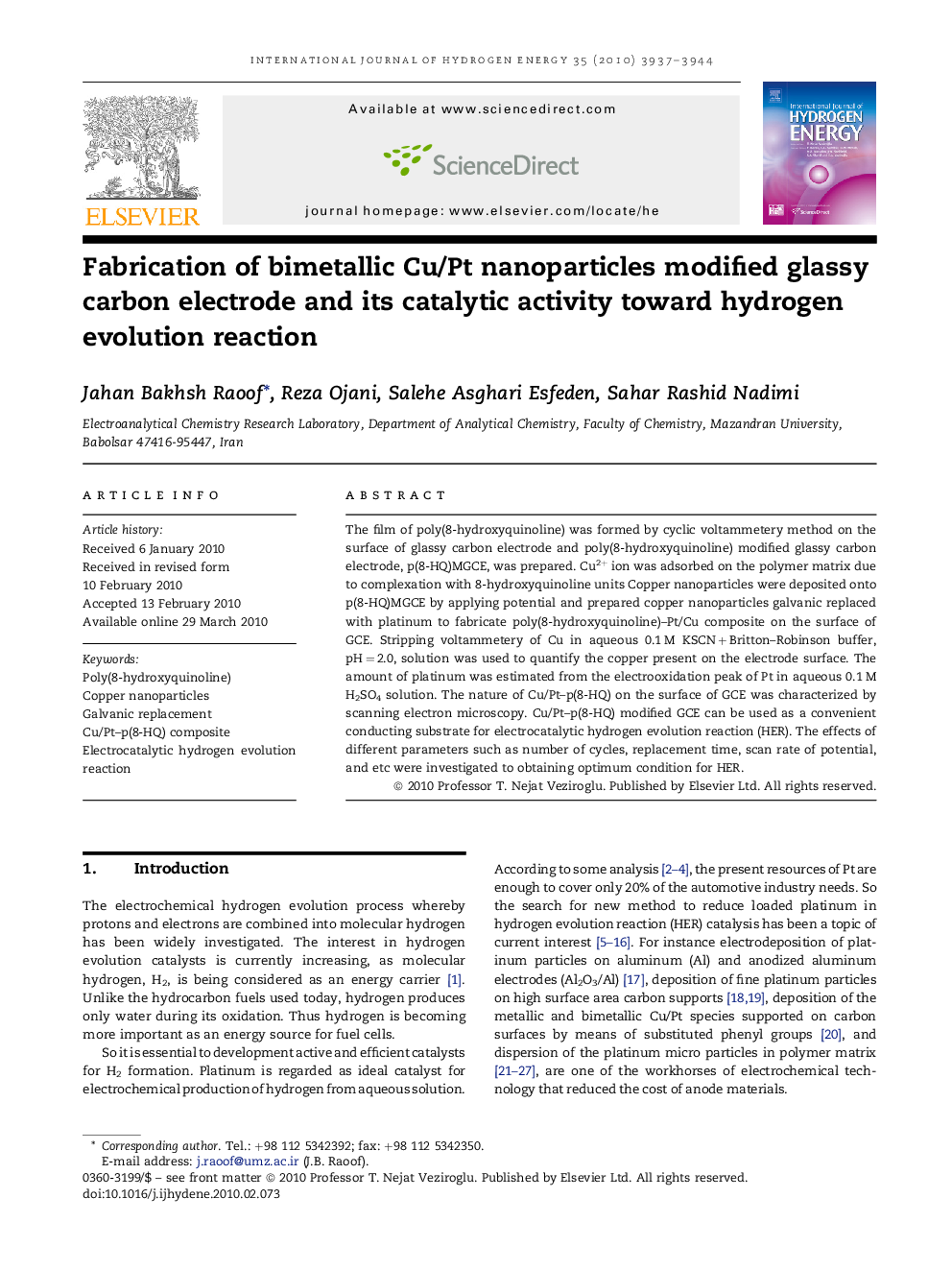| Article ID | Journal | Published Year | Pages | File Type |
|---|---|---|---|---|
| 1273088 | International Journal of Hydrogen Energy | 2010 | 8 Pages |
The film of poly(8-hydroxyquinoline) was formed by cyclic voltammetery method on the surface of glassy carbon electrode and poly(8-hydroxyquinoline) modified glassy carbon electrode, p(8-HQ)MGCE, was prepared. Cu2+ ion was adsorbed on the polymer matrix due to complexation with 8-hydroxyquinoline units Copper nanoparticles were deposited onto p(8-HQ)MGCE by applying potential and prepared copper nanoparticles galvanic replaced with platinum to fabricate poly(8-hydroxyquinoline)–Pt/Cu composite on the surface of GCE. Stripping voltammetery of Cu in aqueous 0.1 M KSCN + Britton–Robinson buffer, pH = 2.0, solution was used to quantify the copper present on the electrode surface. The amount of platinum was estimated from the electrooxidation peak of Pt in aqueous 0.1 M H2SO4 solution. The nature of Cu/Pt–p(8-HQ) on the surface of GCE was characterized by scanning electron microscopy. Cu/Pt–p(8-HQ) modified GCE can be used as a convenient conducting substrate for electrocatalytic hydrogen evolution reaction (HER). The effects of different parameters such as number of cycles, replacement time, scan rate of potential, and etc were investigated to obtaining optimum condition for HER.
